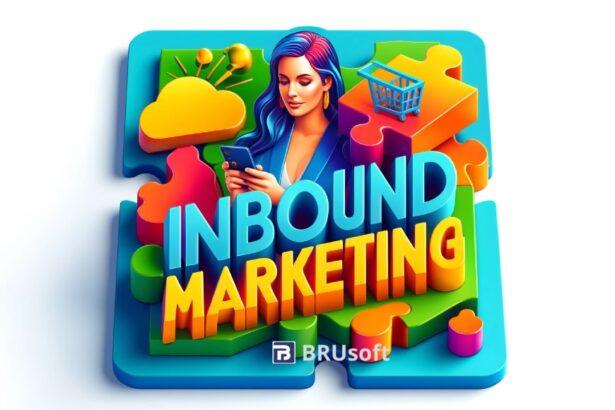Google PPC Across Search and Display
In today’s digital age, businesses must navigate a complex advertising landscape to reach their target audience effectively. Google Pay-Per-Click (PPC) advertising stands out as a powerful tool for achieving marketing goals within allocated budgets. By leveraging both search and display networks, advertisers can create highly targeted campaigns that maximize visibility, engagement, and conversions. This blog post delves into the intricacies of Google PPC, offering insights on how to utilize these platforms strategically.
Google PPC advertising, which includes both search and display ads, offers businesses a versatile approach to digital marketing. Search ads allow advertisers to target users actively searching for specific keywords, ensuring high intent and relevance. On the other hand, display ads appear across a vast network of websites, providing broad reach and brand visibility. Understanding the strengths and applications of each type is crucial for crafting a balanced and effective PPC strategy.
Leveraging Google Search Ads for Precision Targeting
Search ads are the cornerstone of Google PPC, allowing advertisers to capture potential customers at the moment they express interest in related products or services. This section explores how to harness the power of search ads to achieve precise targeting and optimal ROI.
Crafting High-Impact Search Ads
Creating effective search ads requires a deep understanding of keyword selection and ad copy optimization. The goal is to align the ad content with user intent, making it relevant and compelling.
The first step in crafting high-impact search ads is thorough keyword research. Identify keywords that your target audience is likely to use when searching for your products or services. Use tools like Google Keyword Planner to find high-traffic, low-competition keywords. Once you have a list, categorize them into ad groups based on common themes. This organization helps create more focused ad copy and landing pages, improving the overall quality score and reducing costs.
Next, focus on writing compelling ad copy. The headline should be attention-grabbing and include the primary keyword. The description should highlight unique selling points and include a clear call-to-action (CTA). Ad extensions, such as site links and callouts, can enhance the ad’s visibility and provide additional information to potential customers. Regularly test different versions of your ad copy to see which performs best and make adjustments accordingly.
Optimizing Bids and Budgets
Effective bid management is essential for maximizing the return on investment (ROI) of your search ads. It involves setting the right bid amounts for keywords to ensure your ads appear in optimal positions without overspending.
Start by setting a daily budget for your campaigns that aligns with your overall marketing budget. Use automated bidding strategies provided by Google, such as Target CPA (Cost Per Acquisition) or Target ROAS (Return on Ad Spend), to let the platform optimize your bids based on your goals. Monitor the performance of your campaigns regularly and adjust bids for keywords that are underperforming or overspending. Employ bid adjustments for different devices, locations, and times of day to refine your targeting further.
Maximizing Reach with Google Display Ads
While search ads target users with active intent, display ads focus on brand awareness and audience engagement. This section explores strategies to harness the broad reach and visual appeal of display ads.
Designing Engaging Display Ads
The effectiveness of display ads hinges on their visual appeal and relevance to the target audience. Creating eye-catching and engaging display ads is crucial for capturing attention and driving action.
Start by choosing the right format for your display ads. Google offers various formats, including static images, responsive ads, and rich media. Responsive ads automatically adjust their size, appearance, and format to fit available ad spaces, making them versatile for different placements. Use high-quality images and graphics that align with your brand’s visual identity. The ad copy should be concise, highlighting key benefits and including a strong CTA. Incorporate your brand logo and colors to enhance brand recognition.
Targeting and Placement Strategies
Effective targeting and placement strategies are vital for maximizing the impact of your display ads. Google provides various targeting options to reach your desired audience.
Contextual targeting involves placing ads on websites that are relevant to your products or services. Use keywords and topics to find sites where your target audience is likely to visit. Interest-based targeting allows you to reach users based on their past behavior and interests. Use Google’s audience insights to identify and create custom audience segments. Placement targeting enables you to choose specific websites or pages where you want your ads to appear. This is useful for reaching niche audiences or leveraging popular websites within your industry.
Balancing Search and Display Campaigns for Comprehensive Coverage
To achieve comprehensive coverage and drive results, it’s essential to balance search and display campaigns effectively. This section discusses how to integrate these two approaches for a cohesive PPC strategy.
Synchronizing Campaign Goals and Metrics
Aligning the goals and metrics of your search and display campaigns ensures a cohesive approach that maximizes overall performance. Each campaign type has unique strengths, and synchronizing them enhances your PPC strategy.
Start by defining clear goals for both search and display campaigns. For search ads, focus on direct response metrics like click-through rates (CTR), conversion rates, and cost-per-click (CPC). For display ads, emphasize brand awareness metrics such as impressions, reach, and engagement. Use conversion tracking to measure the effectiveness of both campaigns in driving your desired actions, such as form submissions, purchases, or sign-ups. Regularly analyze the performance data and adjust your campaigns to optimize results.
Utilizing Cross-Channel Remarketing
Remarketing is a powerful tactic that leverages both search and display networks to re-engage potential customers who have interacted with your brand previously.
Create remarketing lists for users who have visited your website, viewed specific products, or completed certain actions. Use these lists to show targeted ads across both search and display networks. For example, a user who visited your product page but didn’t make a purchase can be targeted with display ads showcasing that product. If they search for related keywords later, your search ads can appear, reminding them of your brand. This cross-channel approach keeps your brand top-of-mind and encourages users to complete their purchase journey.
Implementing Advanced PPC Strategies for Enhanced Performance
Advanced PPC strategies can further enhance your campaign performance, providing deeper insights and more precise targeting. This section explores techniques to take your PPC campaigns to the next level.
Leveraging Automated Tools and AI
Google offers a range of automated tools and AI-driven features that can optimize your PPC campaigns and improve efficiency.
Smart Bidding strategies, such as Target CPA, Target ROAS, and Enhanced CPC, use machine learning to optimize bids in real-time. These tools analyze vast amounts of data to predict the likelihood of conversions and adjust bids accordingly. Use automated rules to manage your campaigns more efficiently. For instance, set rules to pause underperforming keywords or increase bids for top-performing ones automatically. Utilize responsive search ads, which use AI to test different combinations of headlines and descriptions, delivering the best-performing variations to users.
Conducting A/B Testing and Experimentation
A/B testing and experimentation are crucial for continuously improving your PPC campaigns. Testing different elements of your ads and landing pages provides insights into what resonates best with your audience.
Create multiple variations of your ad copy, headlines, and visuals to see which combinations perform best. Test different landing page designs, layouts, and CTAs to optimize for conversions. Use Google’s Drafts and Experiments feature to create and test campaign variations without affecting your original campaigns. Analyze the results to identify winning combinations and apply those learnings to your broader campaign strategy.
Conclusion
Google PPC advertising, when executed strategically, can significantly enhance your digital marketing efforts. By leveraging both search and display networks, optimizing bids and budgets, designing engaging ads, and employing advanced strategies, businesses can achieve their targeted goals within allocated budgets. The key to success lies in continuous analysis, testing, and adaptation to the ever-evolving digital landscape. Whether you’re aiming to drive direct conversions or build brand awareness, Google PPC offers the tools and flexibility to reach your audience effectively.





